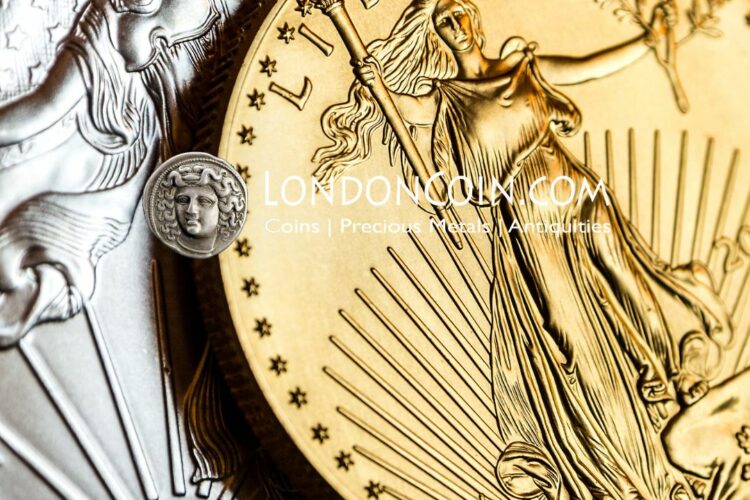With the ability to build wealth and indulge your love of currency, coin-collecting offers more breadth than many other hobbies. But to truly master the art of collecting coins, you need to know the relevant terminology. By learning numismatic terms, beginner and intermediate coin collectors can communicate more effectively and deepen their understanding of this complex hobby. If you’ve heard words from other coin collectors but you’ve been too afraid to ask what they mean, here are essential numismatic terms every coin collector should know.
1. Mint Mark
A mint mark is a letter on a coin that denotes where it was made. Currently, coins feature one of four mint marks that refer to the location of the mint: P (Philadelphia), D (Denver), W (West Point), S (San Francisco). Since the introduction of U.S. currency, there’s officially been nine different mints, which equates to nine different mint marks.
2. Bullion Coins
A bullion coin is a type of coin made from precious metals such as gold and silver. Usually minted in weights that are fractions of a troy ounce, bullion coins differ from other coins because they’re made for the sole purpose of investing instead of day-to-day commerce.
3. Commemorative Coins
As the name suggests, commemorative coins are coins made to memorialize or honor a certain historical event. For example, the 1976 U.S. quarter celebrates the bicentennial of the formation of the country.
4. Error Coins
Error coins are types of coins that feature some type of error that occurred during the striking process. In general, these coins are more valuable because of their rarity. Error coins may be classified as planchet errors, coin die errors, or mint striking errors.
5. Obverse and Reverse
Obverse and reverse refer to the two sides of a coin. The front of the coin — which depicts a president on American currency — is the obverse. The backside of the coin is the reverse.
6. Coin Die
A coin die is a hardened piece of metal used to stamp impressions into the obverse and reverse of a coin. Typically made of steel, the impression is etched into the bottom of the die. It then uses enough force to stamp the design onto coins.
7. Planchet
A planchet is an unstamped coin. Prior to stamping, mints around the world cut various metals into discs. The planchet is then placed underneath the coin die, where it turns from planchet into coin with a strike of the coin die.
Learn More About Numismatic Terms With Us
Although you may have to practice and memorize these terms, it’s well worth the effort. Familiarizing yourself with these terms is crucial for communication, understanding the quality of coin, and avoiding poor coin purchases from shady dealers.
London Coin Galleries of Newport Beach has been serving coin collectors and customers for multiple decades. As a respected Orange County coin dealer, we are experienced in coins, currency and numismatic value.
If you want to learn more about numismatic terms, go to the source: our reputable coin shop. We are experts who’ve been in the coin-collecting industry, besides all the coins we have available, we are a wealth of knowledge — something that can lead to actual wealth in your coin-collecting journey.
Contact us to book an appointment if you’re ready to buy, sell or trade an entire collection or a few coins. We’re glad to help.




